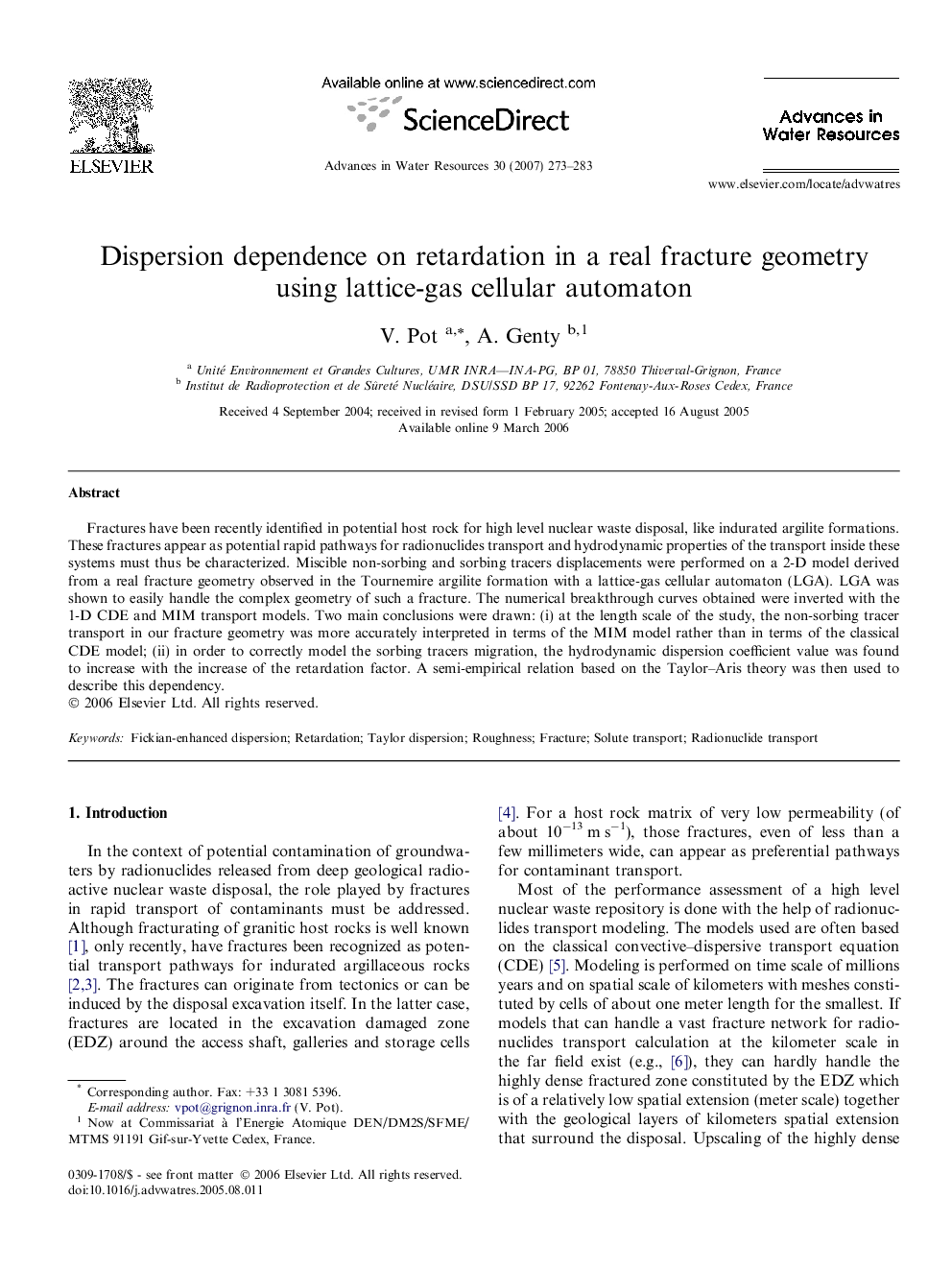| Article ID | Journal | Published Year | Pages | File Type |
|---|---|---|---|---|
| 4526939 | Advances in Water Resources | 2007 | 11 Pages |
Fractures have been recently identified in potential host rock for high level nuclear waste disposal, like indurated argilite formations. These fractures appear as potential rapid pathways for radionuclides transport and hydrodynamic properties of the transport inside these systems must thus be characterized. Miscible non-sorbing and sorbing tracers displacements were performed on a 2-D model derived from a real fracture geometry observed in the Tournemire argilite formation with a lattice-gas cellular automaton (LGA). LGA was shown to easily handle the complex geometry of such a fracture. The numerical breakthrough curves obtained were inverted with the 1-D CDE and MIM transport models. Two main conclusions were drawn: (i) at the length scale of the study, the non-sorbing tracer transport in our fracture geometry was more accurately interpreted in terms of the MIM model rather than in terms of the classical CDE model; (ii) in order to correctly model the sorbing tracers migration, the hydrodynamic dispersion coefficient value was found to increase with the increase of the retardation factor. A semi-empirical relation based on the Taylor–Aris theory was then used to describe this dependency.
